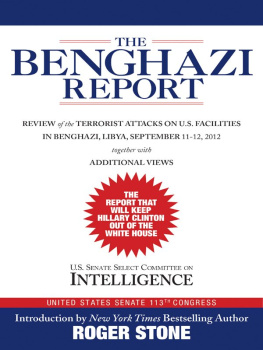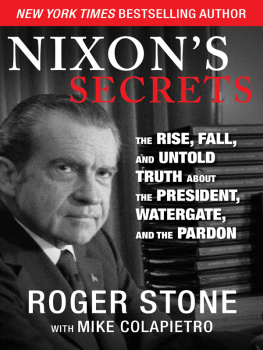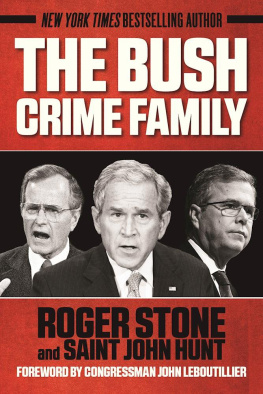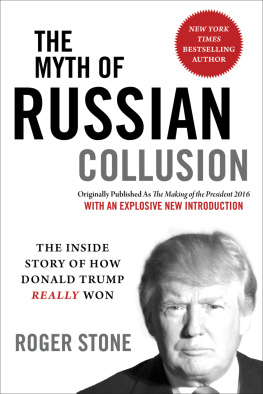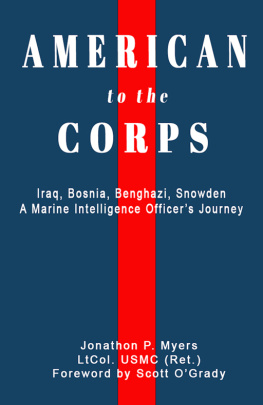Copyright 2014 by Skyhorse Publishing, Inc.
All rights reserved. No part of this book may be reproduced in any manner without the express written consent of the publisher, except in the case of brief excerpts in critical reviews or articles. All inquiries should be addressed to Skyhorse Publishing, 307 West 36th Street, 11th Floor, New York, NY 10018.
Skyhorse Publishing books may be purchased in bulk at special discounts for sales promotion, corporate gifts, fund-raising, or educational purposes. Special editions can also be created to specifications. For details, contact the Special Sales Department, Skyhorse Publishing, 307 West 36th Street, 11th Floor, New York, NY 10018 or .
Skyhorse and Skyhorse Publishing are registered trademarks of Skyhorse Publishing, Inc., a Delaware corporation.
Visit our website at www.skyhorsepublishing.com.
10 9 8 7 6 5 4 3 2 1
Library of Congress Cataloging-in-Publication Data is available on file.
ISBN: 978-1-62914-811-3
Printed in the United States of America
Contents
Why Benghazi Makes a Difference
A N I NTRODUCTION BY R OGER S TONE
T his is the report that Hillary Clinton doesnt want you to read. This report by the U.S. Senate Select Committee on Intelligence contradicts a strained, page-one effort by the New York Times to exonerate thenSecretary of State Hillary Clinton for responsibility in the attacks on the American facility in Benghazi. In short, it is a report every American should read.
The release of the report on the September 11, 2012, attacks on the U.S. Department of State Temporary Mission Facility and CIA Annex in Benghazi, after numerous hearings, and despite significant resistance from the State Department and other executive branch agencies, substantiated a number of the criticisms leveled by Congress at President Obama and Secretary Clinton in the months following the attacks. The reports findings alone show a bipartisan consensus regarding the culpability of State Department officials including, but not limited to, Undersecretary of State for Management Patrick F. Kennedy, Deputy Assistant Secretary for International Programs Charlene Lamb, and ultimately Secretary Clinton herself.
The report, whose eighteen findings are generally commendable for their lack of bias (save for #9, which punts on the issues surrounding the executive branch talking points issued in the days following the attacks), not only takes aim at the Clinton-led State Department, though their fault was certainly the most spectacular, but also critiques other aspects of the executive branch. Finding numbers 4, 9, 10, 11, and 14 all involve significant failings from the various intelligence agencies, including the CIA, the FBI, the State Departments Bureau of Intelligence and Research, and the office of the Director of National Intelligence. Additionally, the committee found that the U.S. military under the direction of General Martin E. Dempsey failed to ensure that any U.S. military assets were situated to intervene in support of U.S. operations within an acceptable time period. The failure of all these agencies and departments illustrates a failure of leadership at the highest levels of the administration.
However, it is impossible to read the committees report without feeling anger, disgust, and contempt for those individuals at the highest echelons of the State Department who were at best incompetent, and at worse willfully negligent in protecting their employees. Employees who, had their superiors shown the least bit of interest in following their own already-established procedures, should never have remained in Benghazi through the end of the preceding summer. As is noted in finding #5, State Department officials overseeing the temporary mission for the Bureau of Near Eastern Affairs were aware that in the months preceding the attacks there had been at least twenty major security incidents involving the Mission Facility, international organizations, and third party nationals. They were further aware that these multiple incidents crossed existing tripwires that should have, at the very least, ensured that far fewer personnel would remain in the facilityif any at all.
Further, the committees findings illustrate a State Department whose leadership was far more concerned with the political optics of reinforcing the Benghazi facility than ensuring that the American citizens and allies working there were doing so in a safe environment. Vice-Chairman Chambliss, in the additional views of the minority appended to the report, reports that Deputy Assistant Secretary Lamb responded to requests to provide additional security agents for the DoS facilities in Libya by arguing it would be embarrassing to provide more agents than were in both Yemen and Pakistanan argument she made despite knowing that unlike the facilities in Sanaa and Islamabad, the Benghazi facility was not up to the State Departments own security standards. Ms. Lamb, who despite losing her position was amazingly not drummed out of the State Department by Secretary Clinton, even informed thenRegional Security Officer Eric Nordstrom that she would not approve additional security personnel because this is a political game.
The report also discusses, at length, the disparity between the response from State Department officials to the growing threat in Benghazi and that of the CIA for their response to threats to their Benghazi facility. Despite repeated petitions to upgrade the physical security of the facility, whose existence at a substandard physical location would have required authorization from Secretary Clinton herself, the extent of those upgrades were to be largely cosmeticheightening the perimeter wall, and installing concrete Jersey barriers.
The internal State Department review of the attacks, cited by the committee, states that [the facility] included a weak and very extended perimeter, an incomplete interior fence, no mantraps and unhardened entry gates and doors. Benghazi was also severely under-resourced with regard to weapons, ammunition, [non-lethal deterrents] and fire safety equipment, including escape masks. In a quote that could be an amusing tale of bureaucratic incompetence under other circumstances, the report notes, the Mission facility had received additional surveillance cameras, but they remained uninstalled because the State Department had not yet sent out the technical team necessary to install them [emphasis added]. In addition the camera monitor in the local guard force booth next to the main gate was inoperable on the day of the attacks due to a needed repair by a technical team.
By way of comparison, the security improvements made to the CIA Annex, while redacted, take up an entire page of the reportand while the exact security procedures the CIA utilized remain classified, it seems a safe bet that their security cameras were both installed and operating on the day of the attacks. This failure to adequately protect the Benghazi facility belongs not just to Ms. Lamb, but also to Undersecretary Kennedy, who turned down offers of Department of Defense security personnel support for State Department operations in Libya from Lt. General Robert Neller, USMC Director of Operations, J3, the Joint Staff.
Finally, while the facts of the investigation presented do not press into the root causes of the inaccurate talking points released in the days following the attacks (that task, partisan as it is, was left for the additional views following the report), the report states in no uncertain terms that there was no protest at the mission facility before or during the attacks. Furthermore, while again refusing to assign motive, the report notes what all can agree, that following the initial release of the faulty talking points the administration was indefensibly slow to correct the glaring errors. Despite the official reports refusing to make a definitive statement regarding the reasoning behind the composition of those talking points, the Committee Minoritys view that this remains one of the open questions relating to the attacks rings true. This fact, too, reflects the extraordinary hubris and lack of accountability of high-ranking administration officials.

